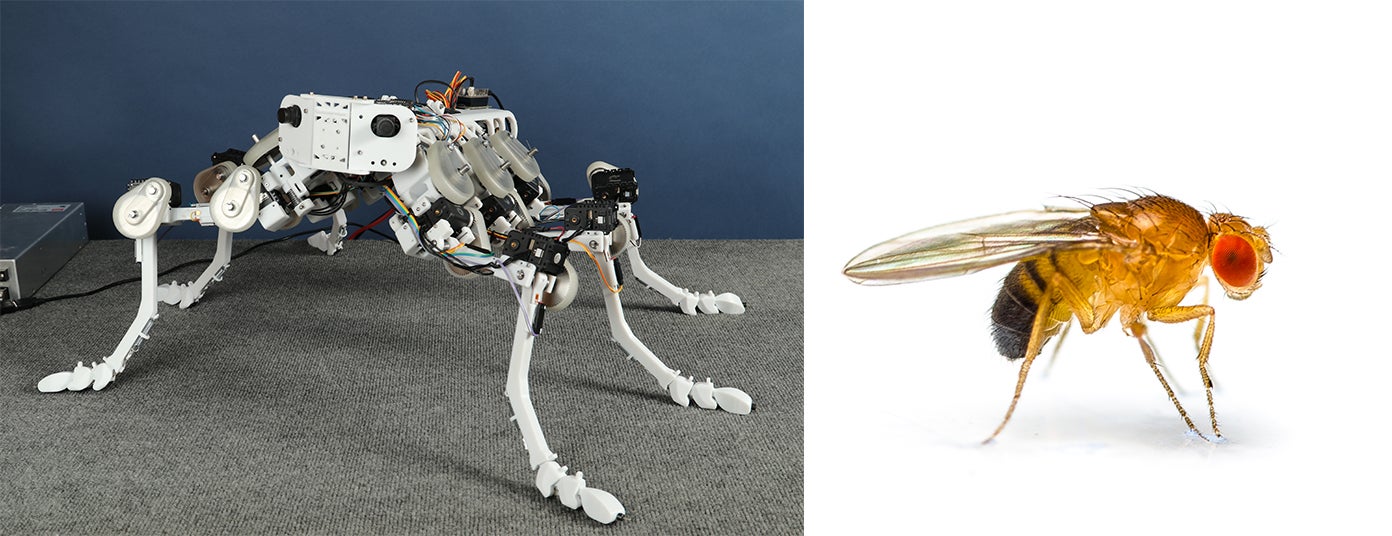lens
How Do the Brain and Body Actually Communicate?
Researchers lead international initiative to understand movement
 IMAGES: Courtesy of Clarissa Goldsmith and Rob Ian/iStock/Getty Images Plus
IMAGES: Courtesy of Clarissa Goldsmith and Rob Ian/iStock/Getty Images PlusClarissa Goldsmith (CWR '19, GRS '20, mechanical engineering) and Nick Szczecinski, PhD (CWR '12; GRS '13, '17, mechanical engineering), created this larger-than-life robot in Roger Quinn’s lab during the last academic year to mimic the way fruit flies walk.
Humans, cats and fruit flies can walk and run. But what happens if they hit an obstacle and fall? The human might break a limb, the cat might land gracefully, while the fruit fly might move on unhurt and seemingly unfazed.
Knowing why beings of varying sizes respond differently to changes in their environment might help answer an enduring mystery: What precisely is happening in the brains and nervous systems to quickly control and coordinate spines, paws, wings and other body parts?
To investigate that question, two pioneering Case Western Reserve professors are leading an international collaboration funded by a five-year, $8 million National Science Foundation (NSF) grant. It’s part of a broader NSF initiative to accelerate the next generation of neuroscience.
Roger Quinn, PhD, the Arthur P. Armington Professor of Engineering and director of the university's Biorobotics Complex, and Hillel Chiel, PhD, a professor of biology, neurosciences and biomedical engineering, are longtime collaborators. They're leading work to better understand animal behavior and movement—and then translate that knowledge to build more adaptive and agile robots.
For this research, they hope to learn from robots, using them to mimic the movements of animals of different sizes— insects, mollusks and small vertebrates. The aim is to understand how these animals use neural communications to coordinate and control movement within a dynamic environment. What they discover could lead to next-generation robots able to avoid a potential mishap, for example, or adjust to other changes in their surroundings.
"I've always wanted to know: How can animals do this so easily and how can we implement their methods in robots?" Quinn said.
"People have been promising lifelike robots for decades," Chiel said, "and one of the reasons we're not really there yet is the complexity of the world around us and the limits to our understanding of how living creatures respond to that changing environment. This project will really enhance our understanding of adaptive behavior."





